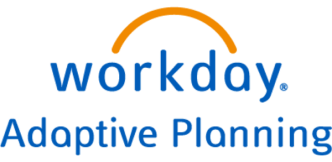Table of Contents
Financial planning used to mean spreadsheets, revisions, and chasing numbers that were outdated by the time they were reviewed. But the landscape has shifted. The role of FP&A is no longer just about reporting; it’s about real-time insight, strategic clarity, and being ahead of the curve.
AI is reshaping the way finance teams think and work. It’s not just another tech upgrade; it’s an entirely different way of planning. Smarter forecasting. Faster decisions. Fewer blind spots. The pace of change is real, and the expectations on finance have never been higher.
This article unpacks how AI is driving the evolution of FP&A, the friction points slowing adoption, and the emerging trends that deserve a closer look. It’s not about hype. It’s about where things are going—and what leaders should be paying attention to now.
Why Finance Leaders Are Turning to AI
Less manual. More meaningful.
AI strips out the low-value work finance teams are buried under—pulling data from multiple systems, cleaning it, loading it into reports, rechecking it, and then rechecking it again. Automating these steps frees up time for the work that actually matters: analysing, advising, and shaping strategy.
More accurate forecasts. Fewer surprises.
Machine learning models can process historical data, real-time variables, and external signals at a scale humans can’t replicate. They find patterns, adjust to anomalies, and constantly improve their predictions. Instead of relying on instinct or last quarter’s trends, teams get forecasts grounded in real evidence, with built-in flexibility to respond to the unexpected.

FP&A Moves from Reactive to Strategic
When AI clears the noise, finance has space to lead. Instead of analysing past performance after the fact, teams can spot shifts early and help the business pivot before it’s forced to. Finance becomes a sharper strategic partner, bringing market intelligence, not just margin updates, to the table.
Insights That Actually Land
AI isn’t just improving the volume of insights—it’s improving their relevance. Instead of sending a one-size-fits-all report across the business, finance can tailor dashboards and recommendations based on who’s reading them. Different business units get insights that speak their language. The result? More engaged stakeholders, faster decisions, and fewer missed signals.
Scale Without the Cost Curve
Growth usually means complexity. More products, more regions, more scenarios to plan for. But AI flips the model. It lets small teams handle large data volumes and run detailed forecasts without needing an army of analysts. It’s a way to scale without ballooning headcount or budget.
What’s Getting in the Way
Data Governance That Keeps Pace
AI is only as good as the data it’s trained on. Without strong governance, bad inputs lead to bad decisions. For finance leaders, that means putting tight controls around data access, versioning, and quality, without slowing down the speed AI is meant to deliver.
Tech That Doesn’t Quite Talk
Legacy systems weren’t built for real-time intelligence. Integrating AI with dated infrastructure often means messy, custom workarounds. It’s doable, but it’s rarely elegant. Moving toward a more modern stack isn’t just an IT issue anymore. It’s a finance imperative.
Training, Not Just Tools
Buying AI-powered tools is easy. Embedding them into how teams think and work is harder. Finance professionals need more than system access; what they need is fluency. They need to trust what the model tells them, know when to challenge it, and understand how to explain it to leadership.
The Talent Crunch
AI is hot, and talent is scarce. Skilled data analysts and FP&A professionals who can navigate automation and machine learning aren’t easy to find—or keep. Upskilling in-house teams is no longer optional. It’s one of the smartest long-term investments finance can make.
What’s Next in AI for FP&A
Autonomous Planning Is on the Horizon
AI models are evolving into systems that can refine themselves over time. They learn, adapt, and tweak financial models without constant human input. Think rolling forecasts that respond in real time to market shifts, pricing changes, or supply chain disruptions—no manual refresh required.
Explainability Will Matter More Than Accuracy
Finance doesn’t work in a vacuum. Whether it’s regulators or board members, stakeholders want to know why the model says what it says. That’s where explainable AI comes in, building transparency into the process and helping non-technical leaders trust the insights, not just tolerate them.
Language Will Become a Data Source
Natural Language Processing (NLP) is giving finance teams access to data that used to be too vague to measure. Social sentiment, earnings call tone, internal feedback loops. It’s not replacing traditional KPIs; it’s adding context around them. And in volatile markets, context is everything.
Insights Will Get Personal
As AI matures, it’s delivering insights tailored not just to business units, but to individuals. CFOs get what they care about. Line managers get what they need to act on. Everyone sees what’s relevant, nothing more, nothing less. The age of generic reporting is winding down.
Conclusion
AI isn’t coming for FP&A. It’s already here, rewiring how finance teams operate and what they’re capable of contributing.
What’s unfolding now is more than automation. It’s a redefinition of the role finance plays in shaping the business. With faster forecasts, sharper insights, and more room for strategic thinking, FP&A is moving out of the back office and into a true leadership role.
That said, the transition isn’t seamless. Data integrity, integration challenges, and the skills gap are real hurdles. But they’re not insurmountable, and the upside is too valuable to ignore.
Staying ahead in FP&A means keeping pace with how AI for Financial Planning is evolving. The tools will continue to change. The trends will keep shifting. But the goal stays the same: better decisions, made faster, with clarity that cuts through the noise.





